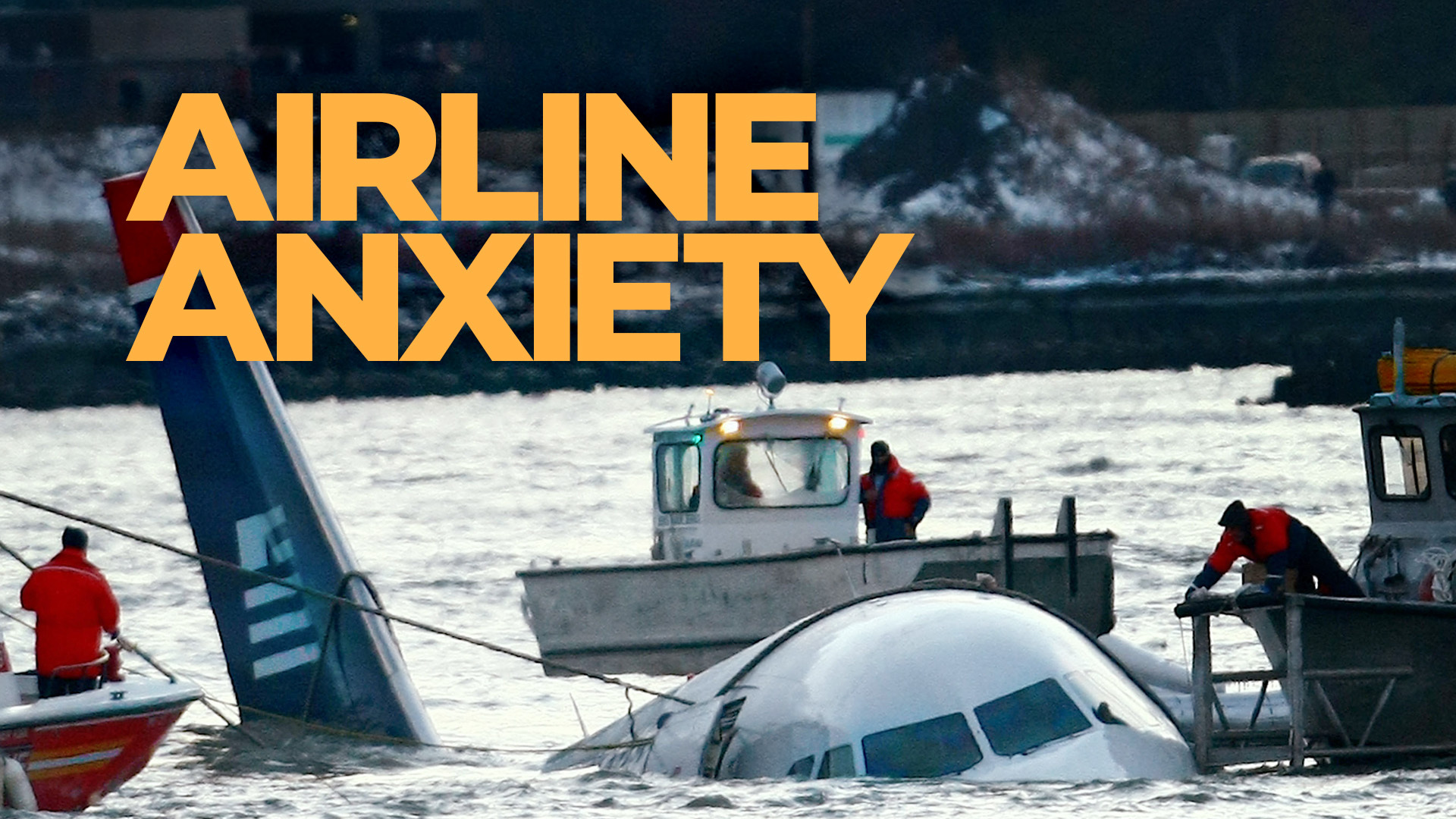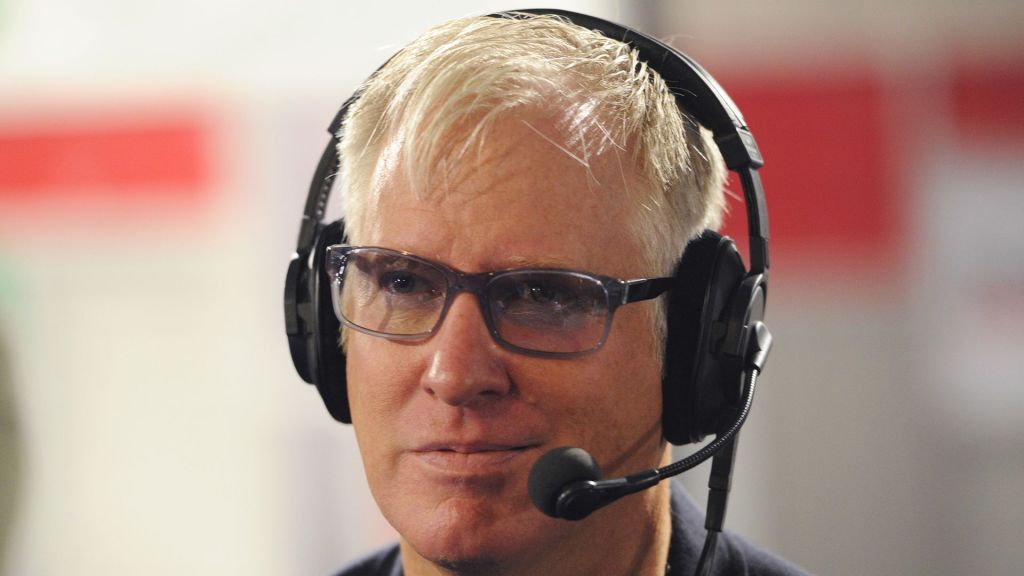
Gwen Baumgardner: WE’VE SEEN THE HEADLINES.
AND THE AFTERMATH.
ROUTINE FLIGHTS THAT GO HORRIBLY WRONG.
IT’S NO SURPRISE UP TO 40 PERCENT OF AMERICANS HAVE ANXIETY WHILE FLYING.
Let’s TAKE A DEEP DIVE INTO WHAT CAN GO WRONG WHEN YOU’RE IN THE AIR…THE LIKELIHOOD OF IT HAPPENING…. AND WHETHER IT’S SURVIVABLE.
WE ENLISTED THE HELP OF PILOT AND TRAINING INSTRUCTOR SKIP BAILEY.
Baumgardner: I think it’s safe to say you’re probably not afraid of flying?
Skip Bailey: No (laughs) I’m definitely not afraid of flying.
Baumgardner: LET’S TAKEOFF WITH THE GOOD NEWS. AIR TRAVEL IS THE SAFEST MODE OF TRANSPORTATION COMPARED TO CARS, TRAINS, AND BOATS.
A REUTERS 2017 ESTIMATE PUT ONE FATAL ACCIDENT FOR EVERY 16 MILLION FLIGHTS.
THAT’S BECAUSE THERE ARE SOME BIG SAFEGUARDS IN PLACE.
Bailey: “Every flight is planned meticulously.”
Baumgardner: HE SAYS DESPITE THE HOLLYWOOD PLOTLINES.
Harrison Ford: “We’re losing fuel!”
Baumgardner: RUNNING OUT OF FUEL IS HIGHLY UNLIKELY….EVEN OVER THE OCEAN.
PLANES ARE REQUIRED TO HAVE FUEL RESERVES *AND EVERY OVER-WATER FLIGHT IS GIVEN WHAT’S CALLED AN ‘EQUAL TIME POINT’.
Bailey: “Say we’re flying from New York to London, and you’re out over that open ocean. Well if you get to a certain point and you have a problem well at that point that equal time point you would be able to turn back. If you’re past that equal time point, then you would continue on.”
Baumgardner: SO DON’T SWEAT RUNNING OUT OF GAS.
BUT WHAT ABOUT ENGINE FAILURE – WHICH HAPPENS ABOUT 25 TIMES A YEAR ACROSS ALL COMMERCIAL AVIATION, ACCORDING TO INTERNATIONAL SAFETY STATISTICS.
THAT’S WHERE ETOPS COME IN. IT STANDS FOR ‘EXTENDED RANGE TWIN-ENGINE OPERATIONAL PERFORMANCE STANDARD.’
A LONG WAY OF SAYING COMMERCIAL AIRLINERS ARE NOT ALLOWED TO FLY ANY FURTHER FROM AN AIRPORT THAN IT WOULD TAKE TO GET BACK ON JUST ONE ENGINE.
Bailey: “All airliners have at least two if not more engines. So they, they all have the ability if something happens to one of those engines to be able to turn around and get back to an airport.”
Baumgardner: THAT’S WHAT HAPPENED ON THIS FLIGHT FROM DENVER TO HONOLULU IN FEBRUARY. THE UNITED FLIGHT EXPERIENCED ENGINE FAILURE SHORTLY AFTER TAKEOFF
AND WAS ABLE TO SAFELY RETURN TO THE DENVER AIRPORT.
I ASKED BAILEY WHAT HIS WORST CASE SCENARIO WOULD BE AS A PILOT.
Bailey: “If all my engines failed because then all of a sudden I don’t have power.”
Baumgardner: TO REITERATE- IF *ONE ENGINES FAILS, THE PLANE STILL FLIES.
BUT MORE THAN ONE…WELL, THAT’S WHEN THINGS
WOULD GET A BIT TURBULENT.
AND WHAT IF IT HAPPENED IN THE MIDDLE OF THE OCEAN?
IN THAT SITUATION, A PILOT WOULD NEED TO RELY ON ‘DITCHING’…A CONTROLLED EMERGENCY LANDING OVER WATER. ALSO, A LAST RESORT.
Sully Sullenberger: “We can’t do it. We’re gonna be in the Hudson.”
Baumgardner: THAT’S WHAT HAPPENED TO CAPTAIN SULLY SULLENBERGER IN 2009…PULLING OFF THE MOST FAMOUS WATER LANDING IN AVIATION HISTORY. USING THE HUDSON AS A HIGHWAY, while keeping THE PLANE INTACT.
DITCHING REQUIRES PILOTS TO SLOW THE PLANE AS MUCH AS POSSIBLE, WITH THE NOSE SLIGHTLY elevated…SO THE PLANE GLIDES ACROSS THE WATER’S SURFACE.
IT’S WHAT FLIGHT ATTENDANTS TRY TO PREPARE YOU FOR AT THE START OF EVERY FLIGHT.
BECAUSE ONCE A PLANE HITS WATER, THE CABIN WILL START TO FLOOD.
THE MIRACLE ON THE HUDSON IS CALLED THAT FOR A REASON—EVERY PERSON SURVIVED.
A FATE *NOT SHARED in MOST water CRASHES…EITHER THE DITCHING WAS UNSUCCESSFUL OR THERE WASN’T ENOUGH TIME TO EVEN ATTEMPT it.
AND THAT’S IF PILOTS EVEN KNOW HOW TO DITCH.
THE FAA DOES NOT REQUIRE ALL PILOTS TO LEARN HOW TO LAND A PLANE IN WATER,
AND FLIGHT SIMULATORS DON’T ALWAYS INCLUDE IT.
MANY AVIATION EXPERTS SAY WATER DITCHING IN PITCH BLACK darkness WOULD BE NEARLY IMPOSSIBLE.
Not reassuring. But to go back to our first point, flying is the safest form of transportation.
Bailey: “If you think about the number of people that do fly without an issue every single day of the year, it’s amazing and it goes to the the way that these airplanes are manufactured, how much testing has gone into that and the amount of training that the pilots get before they are actually the ones out there flying.”
Baumgardner: Leave me your thoughts and your biggest flying fears in the comment section below.
Unbiased news. Directly to your inbox. Free!
Learn more about our emails. Unsubscribe anytime.





